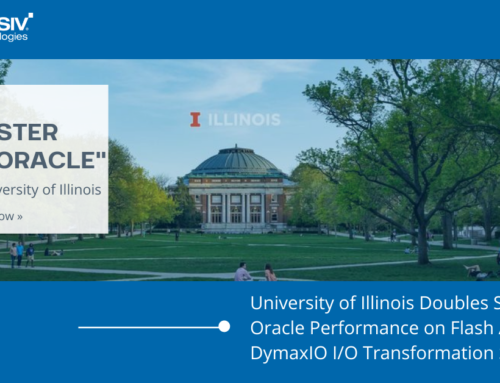Over the last year, 2,654 IT Professionals took our industry-first I/O Performance Survey, which makes it the largest I/O performance survey of its kind. The key findings from the survey reveal an I/O performance struggle for virtualized organizations as 77% of all respondents indicated I/O performance issues after virtualizing. The full 17 page report is available for download at https://learn.condusiv.com/2015survey.html.
Key findings in the survey include:
– More than 1/3rd of respondents (36%) are currently experiencing staff or customer complaints regarding sluggish applications running on MS SQL or Oracle
– Nearly 1/3rd of respondents (28%) are so limited by I/O bottlenecks that they have reached an “I/O ceiling” and are unable to scale their virtualized infrastructure
– To improve I/O performance since virtualizing, 51% purchased a new SAN, 8% purchased PCIe flash cards, 17% purchased server-side SSDs, 27% purchased storage-side SSDs, 16% purchased more SAS spindles, 6% purchased a hyper-converged appliance
– In the coming year, to remediate I/O bottlenecks, 25% plan to purchase a new SAN, 8% plan to purchase a hyper-converged appliance, 10% will purchase SAS spindles, 16% will purchases server-side SSDs, 8% will purchase PCIe flash cards, 27% will purchase storage-side SSDs, 35% will purchase nothing in the coming year
– Over 1,000 applications were named when asked to identify the top two most challenging applications to support from a systems performance standpoint. Everything in the top 10 was an application running on top of a database
– 71% agree that improving the performance of one or two applications via inexpensive I/O reduction software to avoid a forklift upgrade is either important or urgent for their environment
As much as virtualization has provided cost-savings and improved efficiency at the server-level, those cost savings are typically traded-off for backend storage infrastructure upgrades to handle the new IOPS requirements from virtualized workloads. This is due to I/O characteristics that are much smaller, more fractured, and more random than they need to be. The added complexity that virtualization introduces to the data path via the “I/O blender” effect that randomizes I/O from disparate VMs, and the amplification of Windows write inefficiencies at the logical disk layer erodes the relationship between I/O and data, generating a flood of small, fractured I/O. This compounding effect between the I/O blender and Windows write inefficiencies creates “death by a thousand cuts” regarding system performance, creating the perfect trifecta for poor performance – small, fractured, random I/O.
Since native virtualization out-of-the box does nothing to solve this problem, organizations are left with little choice but accept the loss of throughput from these inefficiencies and overbuy and overprovision for performance from an IOPS standpoint since they are twice as IOPS dependent than they actually need to be…except for Condusiv customers who are using V-locity® I/O reduction software to see 50-300% faster application performance on the hardware they already have by solving this root cause problem at the VM OS-layer.
Note – Respondents from companies with employee sizes under 100 employees were excluded from the results, so results would not be skewed by the low end of the SMB market.






Leave A Comment
You must be logged in to post a comment.